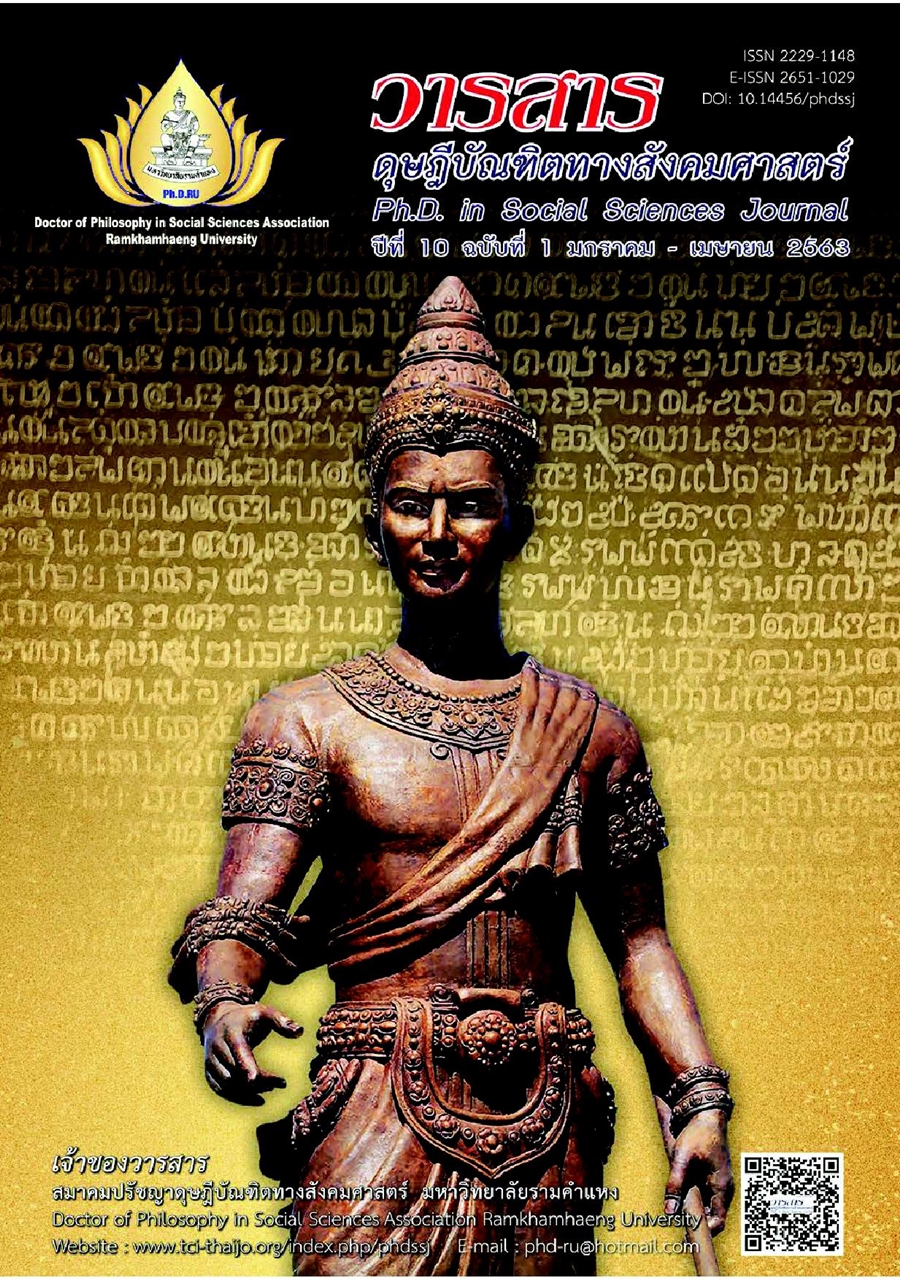Causal Relationship of Factors Influencing Financial Management Capability of Small and Medium Enterprises: A Case Study of Agricultural Machinery Business in Thailand
Main Article Content
Abstract
This research aimed at developing factors that influence the financial management capability of small and medium enterprises. Quantitative research method is used. Data were collected from 395 agricultural machinery entrepreneurs. The statistical analysis used to analyze the data was Structural Equation Model (SEM).
The results showed that the analysis result received was consistent with the empirical data, with the accepted homogeneity index. And from the route analysis it is found that dynamic ability factor, strategic cost management factor, differentiation strategic factor and factor on acceptance of technology and innovation have a direct influence on the financial performance with statistical significance. The agricultural machinery business therefore can use the analysis results as a guideline to manage the business to raise their potential which will result in increased operating results, creating potential products for the business to be able to develop and compete both within the country and the world market.
Article Details
Academic articles, research articles, and book reviews in the Ph.D. in Social Sciences Journal are author’s opinions, and not the publisher’s, and is not the responsibility of the Ph.D. in Social Sciences Journal Philosophy Association, Ramkhamhaeng University. (In the case that research is done on human, the researcher has to be trained in Ethics for Doing Research on Human Training and has to produce the evidence of the training).
References
Aggelidis, P., & Chatzoglou, D. (2016). Using a modified technology acceptance model in hospitals. International Journal of Medical Informatics, 78(2), 115-126.
Andrew, S. A., & León-Cázares, F. (2015). Mediating effects of organizational citizenship behavior on organizational performance: Empirical analysis of public employees in Guadalajara. EconoQuantum, 12(2), 71-92.
Arndt, O. H., & Schoegel, M. (2009). Customer relationship management capability: Antecedents and ITS impact on CRM performance. American Marketing Association, 20, 162-163.
Auh, S., & Menguc, B. (2005). Balancing exploration and exploitation: The moderating role of competitive intensity. Journal of Business Research, 58(12) 1652-1661.
Boonkwan, T. (2010). Looking at the world to positive. McGraw-Hill. [In Thai]
Damanpour, F. (1991). Organizational innovation: A meta-analysis of effects of determinants and moderators. Academy of Management Journal, 34(3), 555–590.
Department of business development, Ministry of commerce. (2016). Business data warehouse. Retrieved from https://datawarehouse.dbd.go.th/bdw/home/login.html
Field, A. (2005). Discovering statistics using SPSS (2nd ed.). Sage.
Fiscal Policy Office. (2016). Economic report, daily economic condition. Retrieved from https://www.fpo.go.th [In Thai]
Griffith, D. A., Noble, S. M., & Chen, Q. (2006). The performance implications of entrepreneurial proclivity: A dynamic capabilties approach. Journal of Retailing, 82(1), 51-62.
Guan, J., & Ma, N. (2003). Innovative capability and export performance of Chinese firms. Technovation, 23(9), 737-747.
Hair, Jr., J. F., Black, W. C., Babin, B. J. & Anderson, R. E. (2010). Multivariate data analysis: A global perspective (7th ed.). Pearson Education.
Johanessen, J. A., & Olsen, B. (2003). Knowledge management and sustainable competitive advantages: The impact of dynamic contextual training. International Journal of Information Management, 23(4), 277-289.
Kaplan, R. S., & Norton, D. P. (1992).The balanced scorecard-measures that drive performance. Harvard Business Review, 83(7-8), 172-180.
Kouvelis, P. C., Chambers, C., & Wang, H. (2006). Supply chain management research and production and operations management: Review, trends, and opportunities. Production and Operations Management, 15(3), 449-469.
Laursen, K.V., Mahnke, V., & Vejrup-Hansen, P. (1999). Firm growth from a knowledge structure perspective. DRUID Working Paper, pp. 99-11.
Malhotra, M. K., Heine, M. L., & Grover, V. (2001). An evaluation of the relationship between management practices and computer aided design technology. Journal of Operations Management, 19(3), 307-333.
Office of Agricultural Economics. (2015). Business data. Retrieved from https://www.oae.go.th [In Thai]
Office of Industrial Economics, (2015). Industrial index. Retrieved from https://www.oie.go.th/academic/index [In Thai]
Office of Small & Medium Enterprise Promotion, (2016). 155 articles of knowledge under the SMEs Service Center Project (Front Service SMEs). Retrieved from https://www.sme.go.th/upload/mod_download/pdf [In Thai]
Piyawongwattana, P. (2012). Strategic management: Technology and innovation. Chulalongkorn University Press. [In Thai]
Porter, M. E. (1990). The competitive advantage of Nations. The Free Press.
Porter, M. E. (2003). Determinants of regional economic performance. Harvard University, Harvard Business School.
Prajogo, D.L., Losirihongthong, T., Sohal, A., & Boon-itt, S. (2007). Manufacturing strategies and innovation performance in newly industrialised countries. Industrial Management & Data Systems, 107(1), 52-68.
Quattrone, P., & Hopper, T. (2005). A ‘time’ space odyssey’: Management control systems in two multinational organisations. Accounting, Organizations and Society, 30(7-8), 735-764.
Radas, S., & Matovac, V. A. (2006). Competitive Position and Its Relationship to Innovation. In L. Galetic (Ed.), Proceedings of the (3rd ed.). International conference on an enterprise odyssey: Integration anddistintegration (pp. 1378-1391). n. p.
Rindova, V., & Kotha, S. (2000). Building reputational stocks through strategic action flows: Lessons from amazon.com and its competitors in Internet retailing. Working paper, University of Maryland and University of Washington.
Roongruangpol, W. (2015). Principles of marketing. Marketing Move. [In Thai]
Sigala, M. (2003). Implementing customer relationship management in the hotel sector: Does “IT” always matter?. 11th European Conference on Information Systems.
Styles, C., & Ambler, T. (1995). Brand management. In S. Cramer (ed.), Financial times handbook of management (pp. 581-593). Pitman.
Teece, D. J. (2007). Explicating dynamic capabilities: The nature and micro foundations of (sustainable) enterprise performance. Strategic Management Journal, 28(13), 1319-1350.
Utterback, J. M., & Suárez, F. F. (1993). Innovation, competition, and industry structure. Research Policy, 22(1), 1-21.
Wild, J. J., Halsey, R. F., & Subramanyam, K. R.. (2007). Financial statement analysis (9th ed.). McGraw-Hill.


